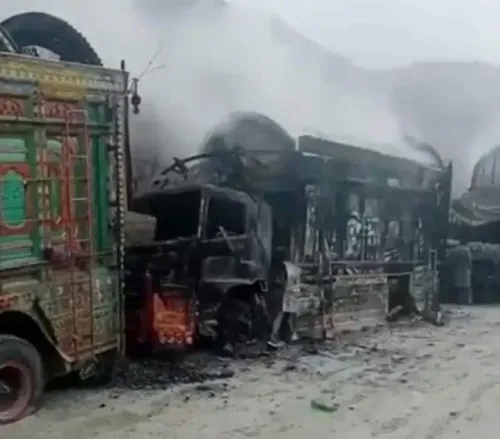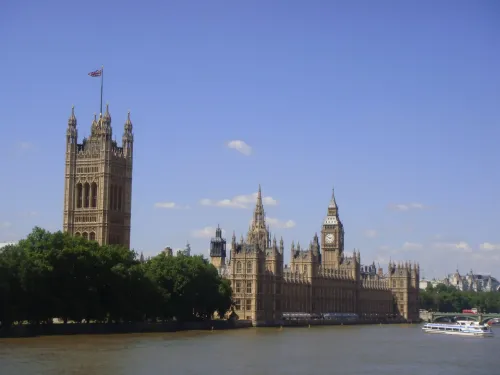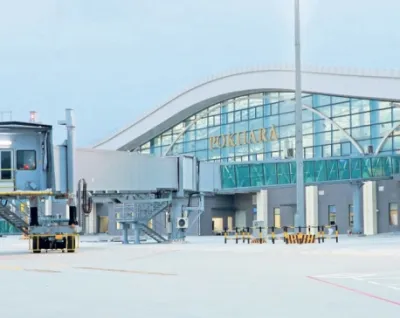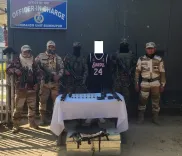Did Pakistan's Invasion of Kashmir in October 1947 Start Terrorism in J&K?

Synopsis
Key Takeaways
- The October 1947 invasion altered the cultural and geographical landscape of Kashmir.
- The event marked the beginning of Pakistan-sponsored terrorism in Jammu and Kashmir.
- Thousands of individuals were displaced or killed during the initial invasion.
- The conflict led to a UN-mediated ceasefire and a division of the territory.
- The legacy of the invasion continues to affect the region today.
Islamabad, Oct 21 (NationPress) The invasion of Kashmir by Pakistan in October 1947 dramatically altered the geography and culture of the region. It also signified the onset of Pakistan-sponsored terrorism in Jammu and Kashmir, a situation that persists to this day, according to a report.
October 22 is commemorated as a “Black Day” in India, serving as a reminder of the violence and displacement initiated by Pakistan in Jammu and Kashmir. On this day in 1947, the battle of Muzaffarabad commenced, where forces comprising Pakistan-backed Pashtun tribesmen allied with regulars of the Pakistani army clashed against the J&K State Forces led by the Maharaja of Kashmir.
“This was Pakistan’s inaugural military effort to seize and control J&K, a campaign that continues to this day. Thousands of Hindus and Sikhs were compelled to flee from Pakistan-occupied Kashmir (PoK), with many others losing their lives,” highlighted a report from PJ Media.
Initially, both India and Pakistan had consented to a standstill agreement regarding J&K. However, on August 24, 1947, Pakistan issued a threat to the Maharaja, warning that 'if Kashmir did not join Pakistan, severe consequences would inevitably follow.' Within two months, Pakistan executed this threat by invading Jammu & Kashmir (J&K) on October 22.
Significant evidence has emerged showing how the Pakistani military and government incited tribal groups to target Hindus and other non-Muslims. This operation was disguised as raids conducted by tribal invaders. The battle of Muzaffarabad on October 22 saw a coalition of Pakistan-supported Pashtun tribesmen and Pakistani army regulars confront the Maharaja’s forces (J&K State Forces), as detailed in the report.
Following this, the Pakistani army directed members of Lashkar to regions such as Mirpur, Uri, and Baramulla, where they wreaked havoc through murder, rape, and pillaging. Over 20,000 Hindus and Sikhs were slaughtered by the invaders in Mirpur on November 25, 1947. In the wake of this chaos, the Maharaja of Kashmir executed the Instrument of Accession to India on October 26, 1947, prompting India to deploy troops for the state’s defense.
“The invasion of Kashmir by Pakistan ultimately resulted in a UN-mediated ceasefire on January 1, 1949. Following this ceasefire, Pakistan retained control over about one-third of the territory while the remaining two-thirds was integrated into India under Article 370 of the Indian Constitution. Together with Article 35A, this amendment established residential and property rights, granting special status to the region,” noted the report from PJ Media.
The history of the Islamization of Pakistan-occupied Kashmir (PoK) teaches valuable lessons about how demographics, culture, and political landscapes have shifted due to Islamic invasions, mass killings, expulsions, and forced conversions.
“During the 1947 invasion of Kashmir by Pakistan, the brutal looting and devastation shocked the world, permanently altering the geography and culture of Kashmir. It marked the beginning of terrorism sponsored by Pakistan in J&K, a trend that remains relevant today. The recent terror attack in Pahalgam, executed by Lashkar-e-Taiba (LeT), a Pakistan-based internationally recognized terrorist organization, is yet another grim chapter in this ongoing saga,” the report concluded.










